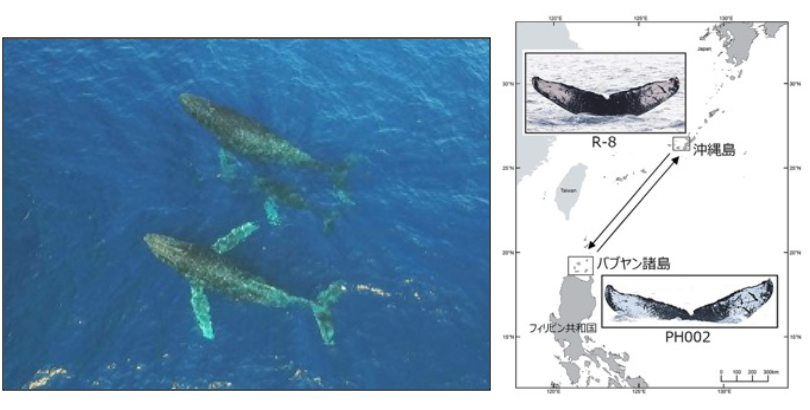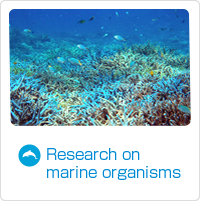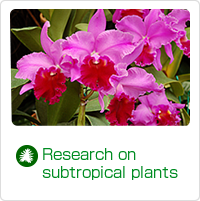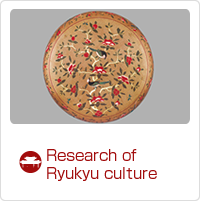- Home
- Okinawa Churashima Foundation Research Institute
- Studies of Marine Animals
- Research activity report
- Publication of scientific paper on the movement of humpback whales between Okinawa and the Philippines!

Research on marine organisms
Publication of scientific paper on the movement of humpback whales between Okinawa and the Philippines!
During summer, humpback whales in the North Pacific feed in high latitude regions such as the waters of Russia and Alaska. In winter, they breed, give birth, and raise their young in the waters of Okinawa and the Philippines. Individual humpback whales can be identified by the patterns on their tail fins. The Okinawa Churashima Foundation, in collaboration with a research organization in the Philippines (BALYENA.ORG) conducted surveys and identified individual whales. The results shed light on the interchange of humpback whales between Okinawa and the Philippines, and were published in international journals. The surveys showed that approximately half of the humpback whales that researchers identified in the Philippines were also confirmed by researchers in Okinawa. Some humpback whales swam between the two regions in the same year. Based on these results of humpback whales migrating between Okinawa and the Philippines, these humpback whales can be recognized as a distinct subpopulation. This is an important discovery for the conservation of humpback whales, and the whale watching industry.

Three humpback whales observed in Okinawa (Left image). The male humpback whale with the identification No. R-8 (Nicknamed Zed) made the most migrations between Okinawa and the Philippines in the same year.
Authors
Jo Marie V. Acebes, Haruna Okabe, Nozomi Kobayashi, Shotaro Nakagun, Takeya Sakamoto, Brendon Hirney, Naoto Higashi, Senzo Uchida (Bold letters: Staff members of Okinawa Churashima Foundation)
Title
Interchange and movements of humpback whales (Megaptera novaeangliae) between western North Pacific winter breeding grounds in northern Luzon, Philippines and Okinawa, Japan
Journal
Journal of cetacean research and management
DOI
10.47536/jcrm.v22i1.201
Copyright (c) 2015 Okinawa Churashima Foundation. All right reserved.




























